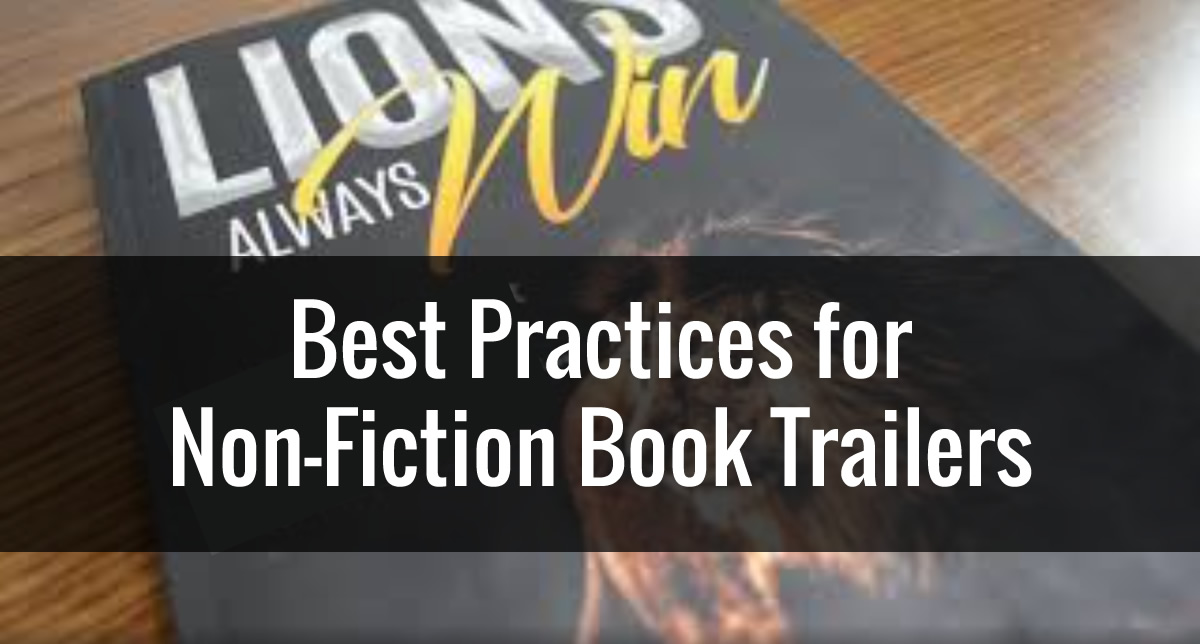Producing a non-fiction book trailer for your book could be one of the most important series of decisions you make toward selling more copies of your book. I use the word “series” because a book trailer requires several decisions throughout the process, including:
- Will you actually take the plunge and go through the steps to produce a book trailer or will you decide to get by without one?
- Will you produce the video yourself or are you willing to invest in someone else to develop a higher quality book promo video for you?
- What is the difference between a good non-fiction book trailer that will improve sales versus a poor one that will reduce sales?
- What specific components should you include in your book trailer?
- What will you do with the book trailer once you have one?
Our aim with this post is to help you answer all of those questions for yourself as well as use this list of best practices when you get to the planning stage of your book trailer.
What is a Non-Fiction Book Trailer?
A book trailer is just like a movie trailer. It’s a quick glimpse into the what the book is about, the author the book was written by, and…most importantly…the reasons (benefits) why a person should buy the book. No real limit exists as to how long a book trailer can be, but, as with any video, shorter is usually better.
How Does a Book Trailer Help with Book Sales?
We live in a visual world. People buy (or take other actions online) based on visual appeal. Video is best. Photos are good. Illustrations are helpful. Text is used to reinforce what people see in imagery. Words alone to sell books would not get you very far. That’s why every book has a book cover; to supply visual appeal.
Your book trailer is your opportunity to inspire potential readers to take a next step with you by purchasing your book. Therefore, if you read nothing else in this post, know this about book trailers:
***Your core book trailer development strategy should be to demonstrate the potential transition a person might go through if readers take action with the contents of your book. ***
The first step is to watch this video as a non-fiction book trailer example that I’ll be referring to throughout this post:
Step 1: Decide When to Create Your Book Trailer
Ideally, your book trailer should be produced before you release your book to the public. But, even if your book is in post-launch, and you want to
sell more books, a book trailer is a worthy investment. This book trailer was produced an entire year after Lions Always Win was released. We will be using it to re-ignite awareness of the book.
Step 2: Gather All of the Pieces and Parts to Include in the Book Trailer
Here is a list of the components you’ll need for your non-fiction book trailer:
- 3D Book Cover and/or a Printed Version of the Book
- Location for Shooting the Footage in a Controlled Environment
- Good Lighting
- Microphone
- Video Recording Device
- Audio and Video Editing Capability
- Script of What Will be Said in the Video
- Graphics
- Photos and/or Videos You are Authorized to Use
- Background Music You are Authorized to Use
- Testimonials
- Production Engineer to Put it All Together
- YouTube Channel
- Someone to Upload the Video to YouTube and Optimize the Listing
- At Least 20 Hours to Invest of Your Own Time if You Plan to Do This by Yourself
Step 3: Create Your Storyboard
Like any promotional vehicle, a non-fiction book trailer is a sales tool. You should map out on paper, or by computer, how you want the book trailer to proceed from one section to the next so each piece works together toward a common goal. Before you start diagramming, consider this age-old sales formula: A.I.D.A.:
Attention > Interest > Desire > Action
Attention
A good promotional trailer for your non-fiction book needs to get the attention of your potential readers before the viewer even clicks on the play button.
The proven rule of thumb for any YouTube video is to feature a first screen thumbnail image (a photo or illustration). Here’s the important thing. Either choose a first-frame image that has words already on it, or create a custom first screen where you add words over the top of the image.
In the Lions Always Win book example, we use the book cover itself, in a skewed position to show off the subtitle of the book: “How to Spot What You Want in Business and Life…and Get it Too.”
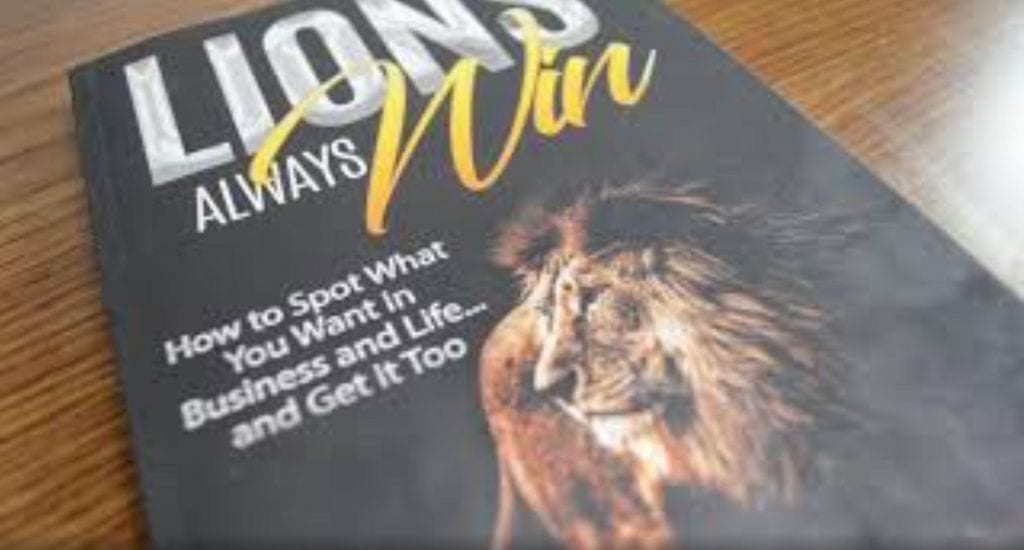
The first five seconds of your video are critical. You really need to have clarity about who your potential readers are and the exact category (or categories) of people need your book right now.
In the Lions Always Win trailer, you’ll notice how our first target reader is “business owners,” where we begin the very first sentences with the announcement, “Business owners are closing their doors at an alarming rate.”
But, the book isn’t just for business owners. It’s more global than that. So, what’s our second category? People who are unhappy at work or have been laid off and unable to find a job.
Our next frame is “Unemployment and underemployment is dissolving peoples’ dreams.”
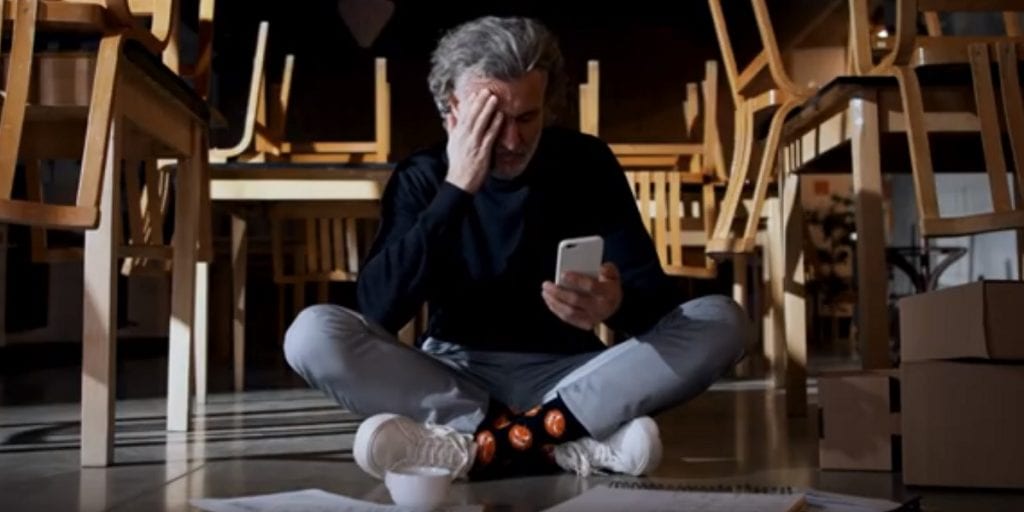
What is the end result of catastrophe for both of these target audiences? Their relationships fail. This is the third audience addressed in the trailer.
We could have added additional targets like people who just cannot seem to lose weight or the rest of the list we feature in the Amazon book description. But, with a book trailer, you don’t have much time. You need to carefully choose either one or three up-front statements to lock-in your target readers and get their attention.
Book trailers from just a year or two ago typically feature still images. Best practices for 2021 and beyond for non-fiction book trailers include using VIDEO to support your main attention getting points instead of stock images.
Interest
The next quadrant of the Lions Always Win book trailer is generating interest in a potential solution. We accomplished this with two carefully crafted sentences, that make up what we call a clarity statement:
“Is everything negative happening in our world to blame? Or, are you in more control of your future than you realize?”
The first sentence aligns with what so many people are thinking today as a result of the pandemic, social unrest and an unsureness of the future. The second plants the seed of hope—a transition—that the solution is potentially attainable.
Again, you really don’t have much time for this piece of the process. Your entire book trailer needs to be shorter than two minutes. Where you really want to focus your time allowance is in the next section.
Desire
You can tell people until you’re blue in the face how your book will improve peoples’ lives. But, nothing you say yourself can move potential readers to buy your book faster than OTHER people making positive statements about your book. Comments in print are helpful. Comments by video are golden.
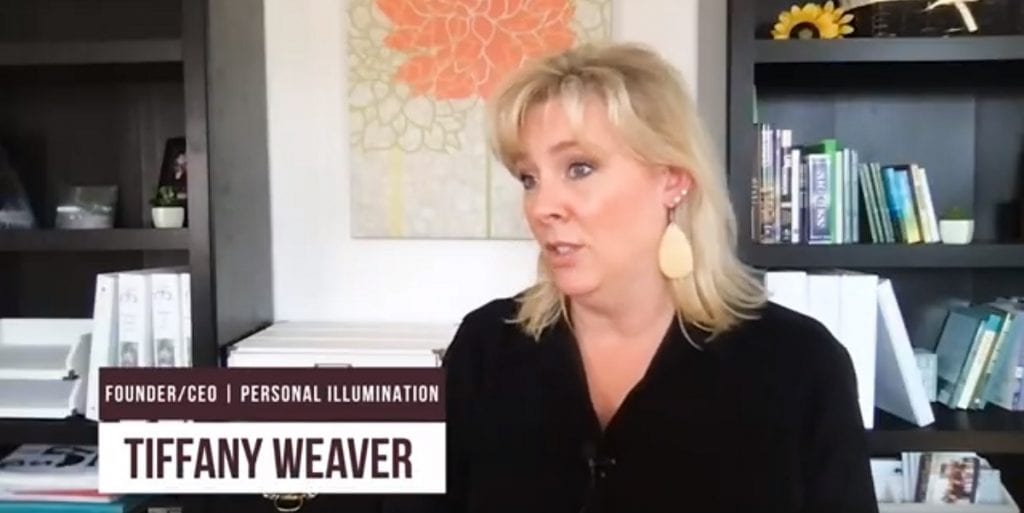
The most important non-fiction book trailer best practice you can adopt from this list is to use video testimonials in your book trailer.
If you want to make more money, do what people are doing who are making money. If you want to lose 50 pounds, hang around people who are in shape! If you want to get better at basketball, play basketball with people who are more skilled than you are.
It’s a simple concept: Our belief that a proposed solution is possible is influenced by others who have put the solution to work for themselves.
Selecting and Recruiting Video Testimonial Candidates
Lions Always Win is not a book with thousands of reviews to choose from. Far more people have sent emails to us thanking us for the book than what is posted on Amazon. From the accumulated list, we were able to pick three specific people who belonged to our most common audiences.
Greg Jameson is a business owner who develops ecommerce websites for clients. When people see “Webstores” in his testimonial, every internet marketer who sees the video will say to themselves, “He’s like me! If the book was helpful for Greg, a fellow internet marketer, there’s a possibility it will work for me too.”
Tiffany Weaver appeals to the female audience on a professional, business, angle, but she also exemplifies the busy, but successful, wife and mother with important decisions to make. She used the perfect, unplanned, line in her video testimonial to say it all in a single sentence.
Peter Brissette represents the business owner who provides an actual marketing services. One of my targets for the book is people who provide professional services to others. Website designers, social media contractors, SEO experts, virtual assistants, and anyone who provides a service where they are paid to generate outcomes, should devour Lions Always Win and have every one of their clients buy the book and go through the exercises before engagement begins! One of the most aggravating situations to be in for a services business owner is to not fully understand client expectations. Sometimes, the client doesn’t even know what they want for the outcome they’re paying for. I purposely chose Peter as an example of someone that should be using the book’s instructions for himself and his clients. That acknowledgment inspires other service providers to do the same.
Summary of Best Practices for Video Testimonials within Book Trailers:
- Make using video testimonials in your book trailer a top priority.
- Carefully recruit video testimonials from your readers who identify with the most likely (or purposefully targeted) categories of potential buyers for your book.
- Incentivize your models to provide a book trailer testimonial for you by offering them free publicity by including their business name in the video.
- Use your video testimonials to build “desire” for attaining what your models have experienced because of your book.
- Interview your video testimonial models to generate conversation content about your book rather than scripted comments.
- Assure video testimonial models have good lighting and sound.
Action
Every non-fiction book trailer will need a final screen. There are a few components to include on your video’s final screen. They include:
- A 3D version of your book cover so that people can easily recognize it when they go Amazon to buy the book.
- Your author photo.
- A domain name that people can type in their browser that will bring them to the buy now page. I suggest using the word “book” in your domain name for this purpose. For the Lions Always Win book, for example, you will see LionsAlwaysWinBOOK.com on the final screen.
- Include a logo for the main distributor of your book. In my case, the only place to get the book is on Amazon.
- Extend the visibility of your final screen for 30 seconds so that there is some time before YouTube forces a different video to appear.
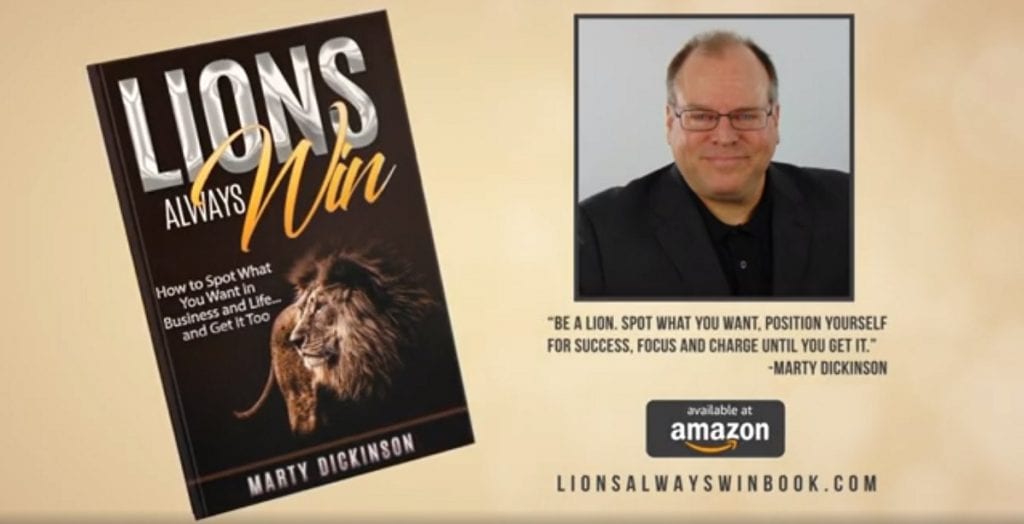
More than just the items on the screen, you need to be particularly intentional for your closing sentence. Again, you don’t have much time here. Readers have already decided whether or not to buy the book thanks to the video testimonials selling the book for you. All you need to do is wrap it up into a pretty bow, while your end screen instructs people visually to go buy the book.
While my final screen is being displayed, I hit a broad audience with a massive claim to clinch the deal. I say, “If Napoleon Hill was to write a new chapter in, Think and Grow Rich, it would be this book.”
The purpose of this sentence is important to consider. My bet is that just about everyone who has read TAGR has wished Dr. Hill himself could write an updated version for today. Sure, there have been attempts by other authors, since the book is public domain, but no edition I’ve seen has added additional chapters to the book. My claim attempts to plant a seed in the reader’s brain that Lions Always Win is at the caliber level to be along side Hill’s book. It’s a big claim! But, as long as no one is able to prove me wrong, I’m sticking to the claim.
What final sentence can you use in your book trailer that not only seals the deal, but elevates your book’s stature to sit next to one of the top books in your industry?
Step 4: Create the Dialogue
In the previous step, I dissected the Lions Always Win book trailer so that you can see the logic behind the pieces and how they flow together. Your specific instruction was to storyboard (or map out) a progression on paper of how your video should flow.
This step is more specific about the verbiage that should be used and how to present it.
Five Ways to Create the Voice Track for Your Book Trailer
There are five basic ways to create the voice you hear on video book trailers. They are:
- Hire a narrator to read a script you’ve prepared
- Improvise and say whatever comes to mind.
- Read a pre-written script you’ve written.
- Use an outline and “talk” to your audience.
- Respond to an interviewer asking you questions.
As far as best practices are concerned, we suggest you consider this list of five possibilities in reverse order as being best to worst.
For example, the best way to generate recorded dialogue for a book trailer is for someone to interview you with questions. You would setup the camera at an angle so that you are not talking directly into the camera but at a 45 degree angle. Your eyes would focus on the interviewer. Of course, the interviewer’s questions are edited out in the final video.
The only time I might recommend hiring a narrator (the worst of the options) to replace your voice is if your voice is physically damaged by injury, illness, or some other deficiency. Actually, even if your voice is unclear, it could add to the value of your dialogue because you are using your authentic self.
**Above all, your voice and the words you say need to be authentic.**
That’s why reading a pre-written script should be considered only after you’ve ruled out the possibility of having an interviewer or talking your way through an outline.
Talking your way through an outline is a good combination of the best worlds and what I personally used to create the dialogue where you can see my face in the video. On a few pieces of paper, I typed some main phrases in large print that I wanted to make sure to include. Then, I mounted the pages onto a music stand and raised the music stand up to eye level…away from the camera’s view.
Even though I was being interviewed by a person, I could look at my pieces of paper from a few feet away and see the phrases I wanted to include in my responses.
Although very rare, the possibility exists that you are such a skilled presenter that you can completely improv your book trailer dialogue. For most people, just turning on the camera and rolling winds up in the author becoming totally frustrated.
Voice Inflexion Matters
In a 5-month virtual live presentation practice group I organized a couple of years ago, we realized how important voice inflexion is in a video setting. You can view our list of virtual live presentation best practices. Pitch, speed, voice clarity, and the emotion your voice conveys all contribute to how listeners digest your words.
If you listen to my voice a few times in the book trailer video, you should hear the sound of empathy. What I’m really doing, is essentially stating a problem and then hope that there’s a solution.
Then, my voice changes to be more energized to suggest a solution actually does exist.
That’s the main goal of a book trailer; to state a problem with empathy and transform the viewer into believing a solution exists.
Establishing Credibility
Your book trailer should sell you as the author just as much as it sells your book. Best practices for the dialogue section of a book trailer needs to include building credibility for the author.
In the Lions Always Win book trailer, I establish credibility with three parts. They include:
- Why the book needed to be written.
- Introduction of myself as the author.
- Proof of social equity.
Of these three components, the only one that really needs explanation is #3, proof of social equity.
People like to learn from people who have some history of teaching or guiding other people. How can you demonstrate that experience in a book trailer? By showing you speaking in front of an audience.
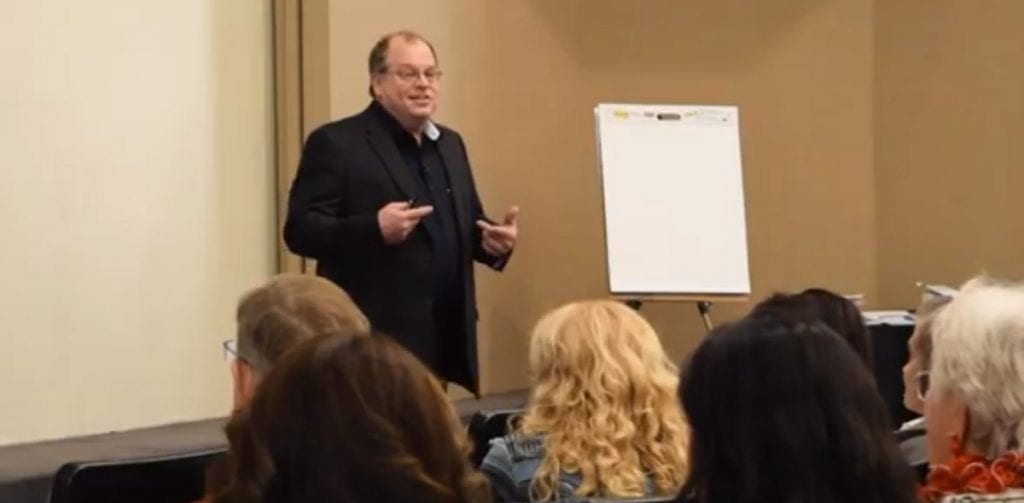
Of course, we are still in the time of the pandemic. Maybe you don’t have the opportunity to get out on stage in front of a few dozen people to give a speech. That’s okay. Just fire up your Zoom account and invite some friends and talk for a few minutes. Record your session and then use video-only component in your book trailer.
Step 5: Produce the Book Trailer
Best practices for producing your video and audio components of your book trailer are divided into two parts: Techniques and Team.
Best Practices for Book Trailer Recording Techniques
- The author should be sitting in a chair or on a stool during the video shoot.
- The camera lens should be set to pickup 3/4 of the subject’s torso in the shot.
- Use the horizontal view for recording.
- Subject should angled 45 degrees from the camera eye.
- Create a focal point for the author to focus on that is also 45 degrees from the camera eye.
Plenty of best practices sources exist for video frame rates and lighting specs. We wanted to keep this list focused on positioning of the person being recorded.
Best Practices for Using a Team to Produce Your Book Trailer
Production of the actual video for a book trailer can be accomplished three ways. Each method has its own benefits and drawbacks. Hopefully, you will be able to make a better educated decision of which production method will be the best fit for you now that you have book trailer best practices in mind.
The three methods of video production for your non-fiction book trailer include:
- Done for you.
Benefits: You spend no time on the project. Totally hands-off.
Drawback: No control of outcome. Most expensive if all best practices are used in the process. - Do it yourself.
Benefits: Save money, keep full control.
Drawback: Lose time you could be spending on other things and miss out on experience from having a production crew. Waste time having to learn technical aspects that could much more easily and speedily be done by a professional. - Done with you.
Benefit: The project is more of a collaboration of experience between you (the author) and the production crew. Highest potential for return on investment.
Drawback: You’ll potentially spend a lot of time recruiting and vetting qualified helpers to produce your video book trailer with you.
Your Next Step to Getting Your
Non-Fiction Book Trailer Done
I’m always asked “How did you get your book trailer made?” Well, I’m no do-it-yourself video expert, that’s for sure! I would have never completed a book trailer had I not met Bob Regnerus.
Bob is a co-author of The Ultimate Guide to Facebook Advertising (4th edition) with Perry Marshall and other big names.
In fact, I even interviewed Bob about Facebook ads and his book during their book launch week. You are welcome to watch it here:
Bob is the owner of a company that produces videos for business owners. Part of that business includes producing book trailers for authors. As you decide on which of the 3 methods of getting a book trailer done is best for you, I strongly suggest you consider Bob’s team as an option.
Click the image below to watch the book trailer and business owner videos Bob has assembled for your review and see how they all have themes and production qualities that are consistent with the list of best practices you received in this post.
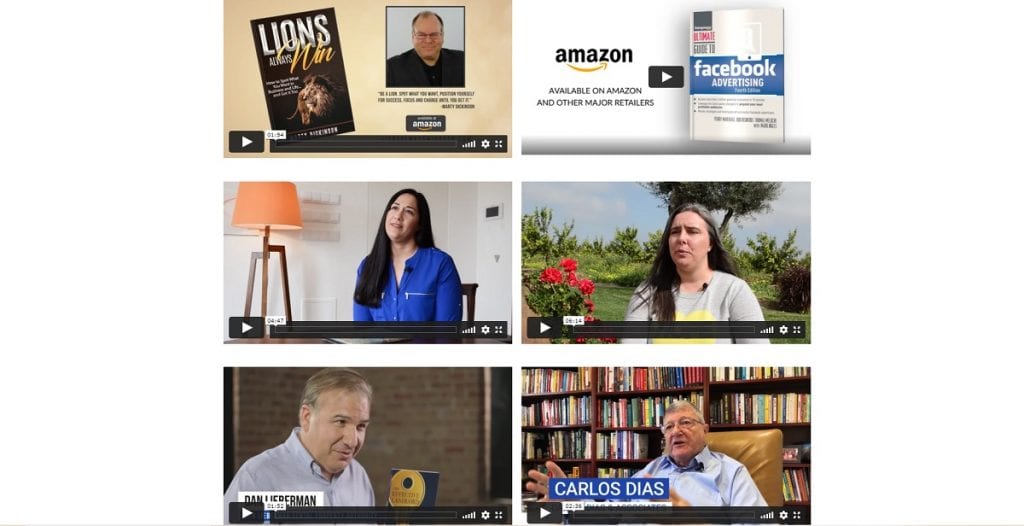
or Copy and Paste this URL into Your Browser Window in a New Tab
https://feedstories.com/authors-marty/
BONUS!!: If you hire Bob’s “done-with-you” services to produce your book trailer, send your book trailer video link to me when it’s complete and I will personally promote your book trailer to my outlets free of charge!
It’s my gift to you in return for putting these best practices to use!
Best of luck with your non-fiction book trailer. I truly hope your book will transform people and change lives.


